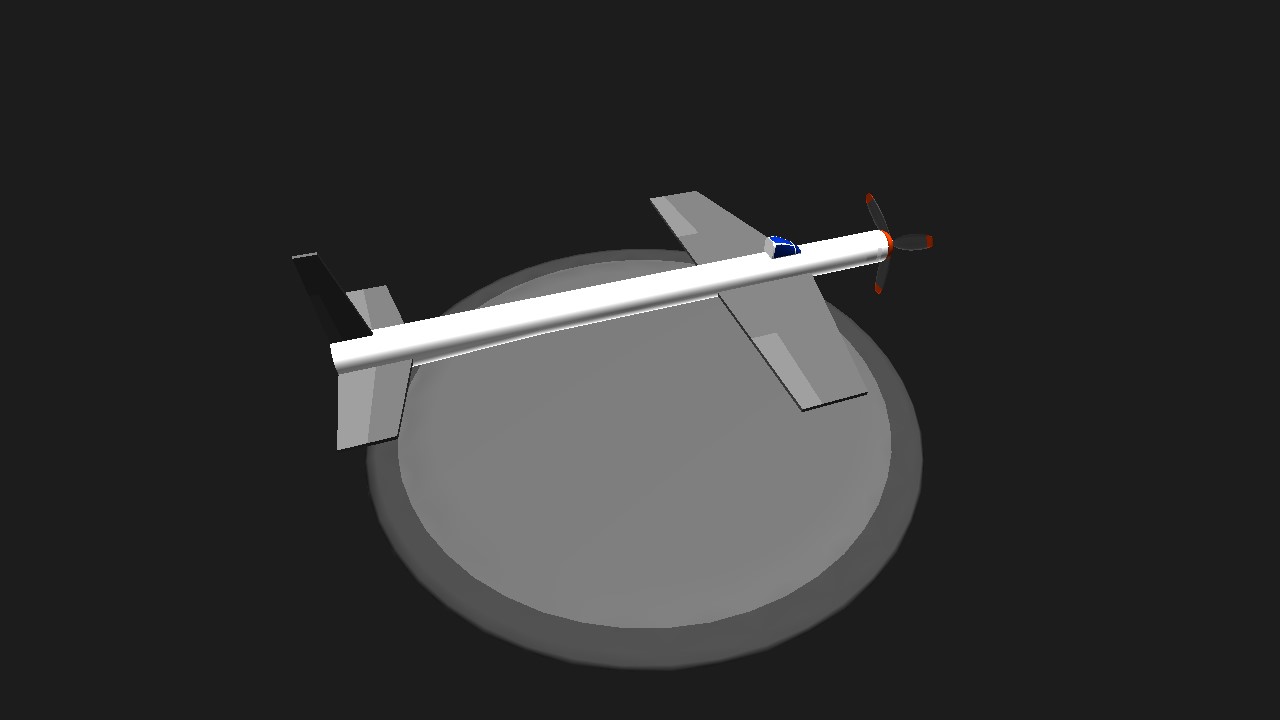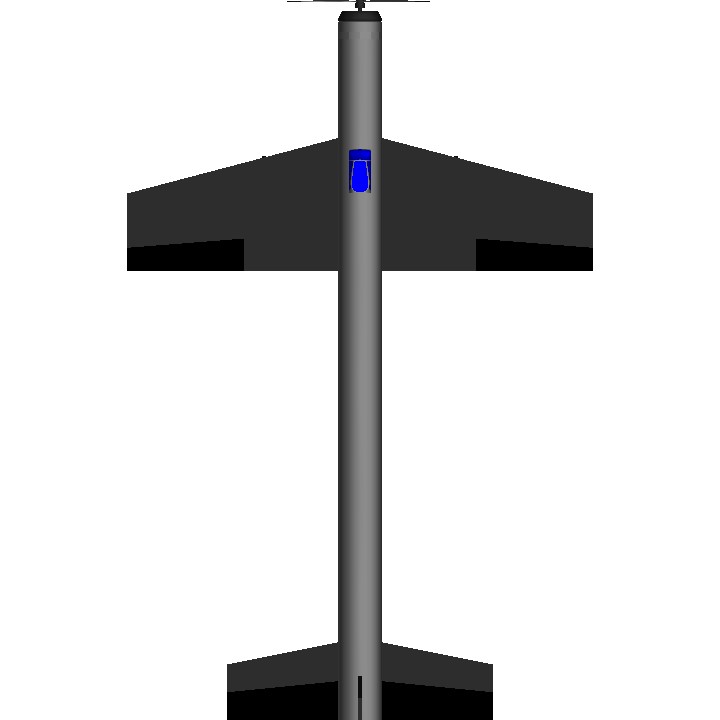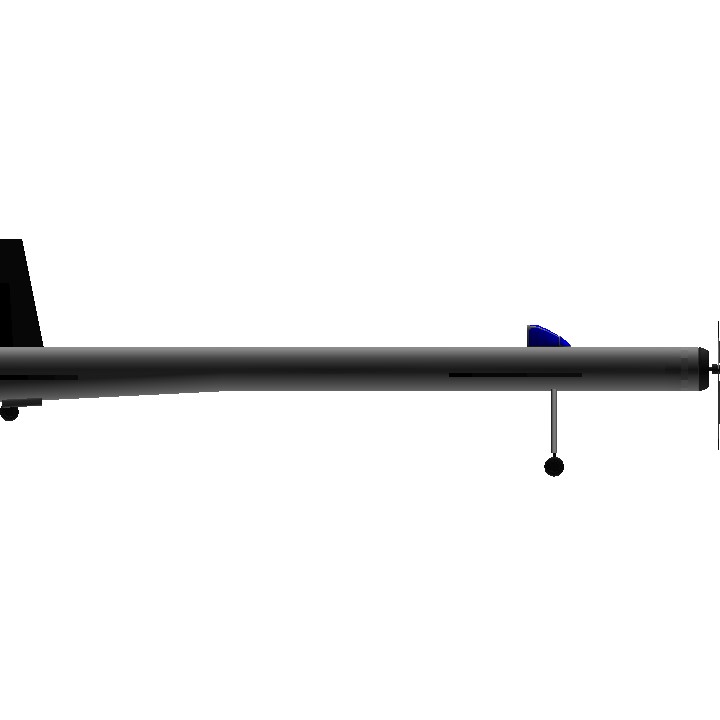An airplane that stalls easily, used for understand stall characteristics and how it happened
Description of stall characteristics (from game experience)
Stalling is caused by the excessively close distance between the center of gravity and the center of lift, so that the aircraft has excessive agility that does not match its wing area (weight is not calculated)
To put it simply (not counting weight), it means that the center of gravity is too close to the center of lift. Although you can have stronger pitch agility, if the speed is reduced (air contact is also less, the lift generated by the air flowing through the wing is also It will decrease), the lift that the wing area can generate decreases. Once the airspeed is reduced and the total lift cannot be loaded to the weight of the aircraft, it will stall (the aircraft will drastically reduce the airspeed during maneuvers, so stalls are more common during maneuvers, but It’s also more dangerous than stalling in normal level flight)
The elevator control surface (pitch) also partially determines the stall speed
In simple terms, the total lift of the wing area, the distance between the center of gravity and the center of lift, and the control surface of the elevator can control the stall speed of the aircraft (but only if the weight of the aircraft remains unchanged)
The conclusion is that when the weight of the aircraft remains the same, the larger the wing area, the shorter the distance between the center of gravity and the center of lift, and the larger the control surface of the elevator, which makes the aircraft pitch maneuver more agile; but the center of gravity and the center of lift can be more agile. The distance is shorter and the elevator control surface is larger. In theory, when the weight of the aircraft remains the same, a larger wing area is required to maintain the rapid loss of airspeed when the aircraft is maneuvering agilely to avoid Airplane stall
law-
1- The weight of the aircraft is too heavy and the aircraft can’t fly: increase the wing area
2- The pitch is not agile, shorten the distance between the center of gravity and the center of lift and increase the control surface of the elevator (pitch)
3- The aircraft is easy to stall, increase the wing area
4- The aircraft is too heavy to fly, increase the wing area or increase the engine horsepower or replace with a better engine (generally, engine changes will make the situation very complicated, especially in terms of the overall weight of the aircraft, the new engine The new weight and the replacement of the new engine cause the fuel to be consumed faster, and more fuel needs to be carried to maintain the weight of the same flight range)
But the theoretical principle is based on not changing the acceleration that the engine can produce, but if the acceleration produced by the engine is faster, it can better compensate for the speed lost during maneuvering so that the speed can be maintained at a so-called "minimum speed for maneuvering." , If the engine acceleration is strong enough, it can theoretically keep the aircraft in the most agile state during maneuvering without stalling
Simply put, the stronger the engine, the more the speed lost during maneuvering can be replenished, and it is not easy to stall when maneuvering with full thrust.
The control surface means the area that can be manipulated. The control surface of the elevator is the thing that will tilt up when the nose is pulled up.
In a stall, the weight of the aircraft itself will become an uncontrolled force to guide the flight direction of the aircraft. The heavier the aircraft, the more you can feel it. The wings will also produce drag when stalling, just like the tail wing of a helicopter. When the weight becomes a force that makes the airplane fly in other directions uncontrollably, the wing generates flight resistance, which makes the stall situation more uncontrollable, but the solution is to use lift to resist this uncontrollable situation, but lift requires speed (At high speed, let air contact the wing to generate lift, the faster the speed, the more lift)
There is another way to stop the stall. If the nose of the machine is always upwards during the stall, then press the nose down and pull the nose downwards, because the direction of the force is different from the direction of the nose during the stall. The middle wing becomes something that generates air resistance. If the direction of force is below, the general wing layout is used, and the front wing area is relatively large, then the nose will continue to rise and become uncontrollable, so if the wing layout refers to reality The canard design in the middle can theoretically prevent stalls
The upward force generated by the wing is called "lift". Then the engine thrust angle upwards partially or completely replaces the wing lift when the nose climbs. At this time, the lift of the wing will not be uncontrollable like a horizontal stall,and Falling down, but because the wing does not have too much air to flow through to generate lift, the aircraft's handling performance is significantly reduced
Specifications
General Characteristics
- Successors 2 airplane(s)
- Created On Android
- Wingspan 34.2ft (10.4m)
- Length 53.3ft (16.2m)
- Height 17.7ft (5.4m)
- Empty Weight 4,924lbs (2,233kg)
- Loaded Weight 11,709lbs (5,311kg)
Performance
- Horse Power/Weight Ratio 0.17
- Wing Loading 34.1lbs/ft2 (166.3kg/m2)
- Wing Area 343.8ft2 (31.9m2)
- Drag Points 2714
Parts
- Number of Parts 15
- Control Surfaces 5
- Performance Cost 196




